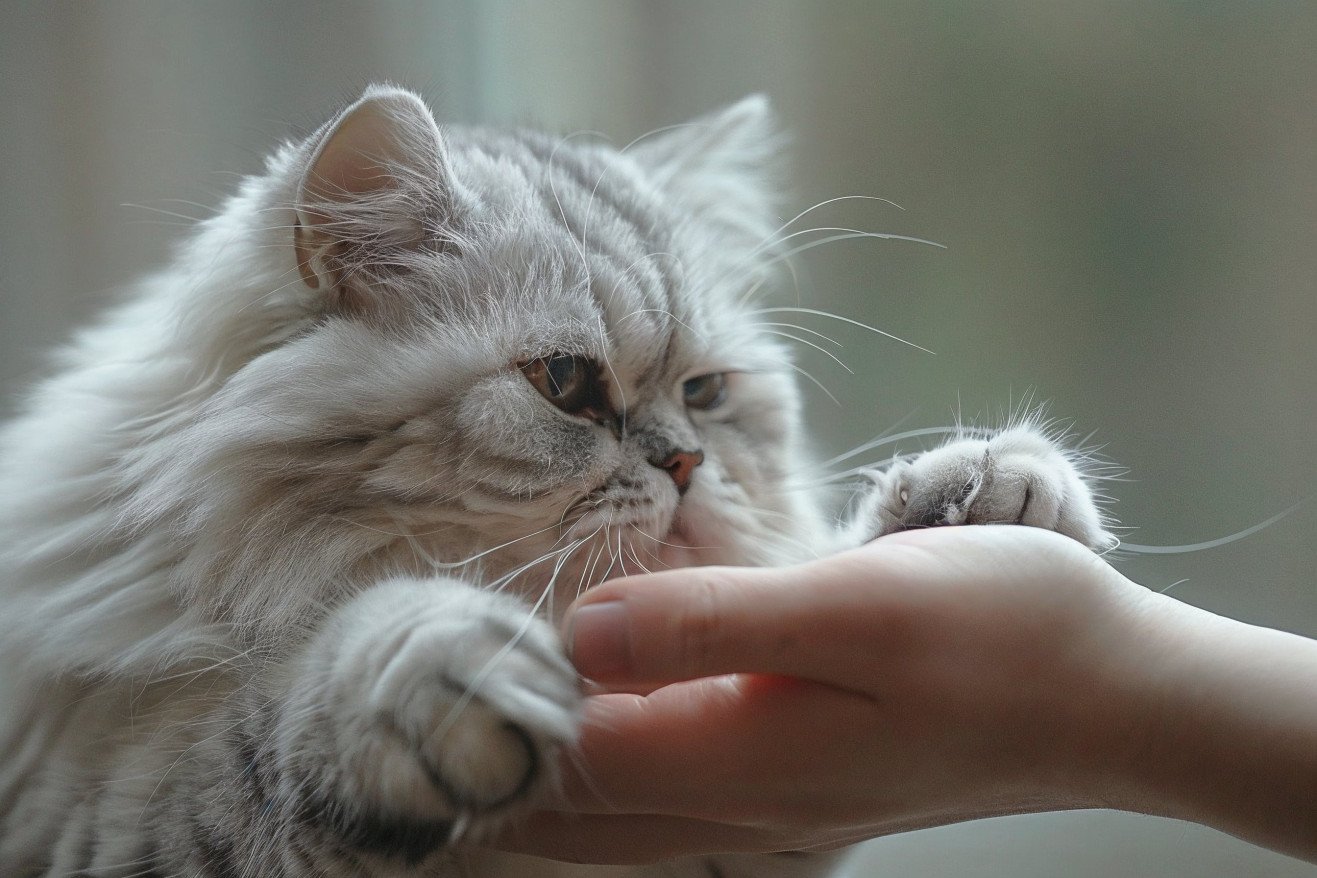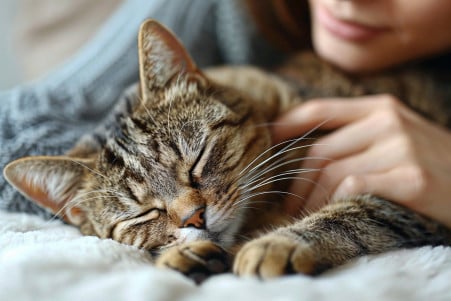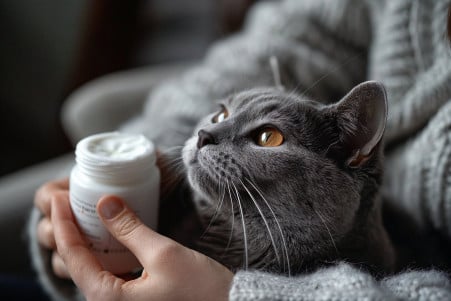The Science of the Itch: Why Do Cat Scratches Itch?
4 March 2024 • Updated 4 March 2024

If you’ve ever been on the receiving end of a cat’s love scratch, you’ve probably experienced the strange itch that follows, but why exactly do cat scratches itch? Cat scratches itch because the body’s inflammatory response to minor injury includes the release of histamines, which stimulate nerve endings.
Bacterial infections from cats’ claws, such as Bartonella henselae, which causes Cat Scratch Disease, also contribute to the itching. Make sure to clean the wound and watch for any signs of infection.
To understand the science behind why cat scratches itch, we will take a multidisciplinary approach. This will involve a deep dive into the worlds of dermatology, immunology, and infectious disease. We will look at the physiological processes that lead to itching, explore the potential impact of cat saliva and its proteins, and discuss the role of the most common bacteria that cats transmit.
By examining this research, you will come away with a better understanding of why cat scratches itch and how to treat and avoid potential infections.
Why do cat scratches itch?
Breaking Down the Itch: How the Skin Responds to Cat Scratches
When a cat’s claw breaks the skin, it breaches the body’s first line of defense against the outside world. This breach immediately triggers the skin’s alarm system. T cells rush to the area and release IL-17a, which tells skin cells to move and start the healing process. Inflammation occurs as the skin’s barrier function is compromised, which is the body’s way of protecting itself and promoting healing.
An article from Science in the News at Harvard University explains the immune response in more detail, explaining that cells like neutrophils and macrophages come to the area to clear out debris and potential pathogens. This cellular response leads to the release of cytokines and chemokines, which can cause itching by stimulating nerve endings.
These nerves, which are part of the peripheral nervous system, send signals to the brain that the brain interprets as an itch. An article from PMC explains that the healing process is complex and involves both the innate and adaptive immune systems.
Itching is a common part of the healing process and indicates that the body is working to heal the breach in the skin’s barrier. While many people believe that itching means that an infection is present, it’s actually a sign that the body is working to heal itself and restore the skin’s barrier.
Cat Saliva: The Other Allergen to Blame for the Itch
Cat saliva contains allergens, including the protein Fel d 1, that can make the itch from cat scratches worse. A study published in PMC showed that Fel d 1 is recognized by the immune systems of as many as 90% of people with cat allergies, causing an itchy immune response.
When cats groom themselves, they deposit their saliva, and the allergens it contains, on their fur and claws, which can then be transferred to a person’s skin when the cat scratches them.
The severity of the immune response to Fel d 1 can vary widely from person to person, and the presence of antibodies to the protein, whether naturally occurring or induced by immunotherapy, can affect the severity of the itch.
Studies have shown that anti-Fel d 1 immunoglobulin Y (IgY) from eggs can be used to create a treatment that reduces the amount of Fel d 1 in cat saliva, potentially providing a new way to help people with cat allergies.
To reduce the risk of itchiness from cat scratches, it’s important to minimize exposure to cat allergens by keeping cats clean, considering allergen-reducing diets, and maintaining a clean home. People who are sensitive to cat allergens should make sure to clean scratches immediately and talk to their healthcare provider about ways to manage their allergies.
How to Deal With Cat Scratch Disease: Signs and Symptoms to Know
Cat Scratch Disease (CSD) is caused by the bacterium Bartonella henselae, which is most commonly spread through cat scratches that are contaminated with saliva. According to Johns Hopkins Medicine, the first signs of the disease are redness and swelling at the site of the scratch.
The CDC says that a mild infection can occur at the scratch site with lesions, pus, fever, headaches, loss of appetite, and fatigue. Swollen and painful lymph nodes near the scratch site can also occur one to two weeks after the scratch.
As Cleveland Clinic explains, CSD is typically diagnosed based on a physical exam and blood tests that check for antibodies to B. henselae. Treatment usually involves managing symptoms, although antibiotics may be prescribed in more severe cases or for people with compromised immune systems.
It’s important to keep an eye on cat scratches for signs of CSD. If you notice symptoms like a prolonged fever, swelling, or pain in lymph nodes, you should see a healthcare provider.
Preventative measures include cleaning wounds immediately, keeping cats from licking open wounds, and controlling fleas to reduce the risk of infection. By being aware of and following these preventative measures, you can reduce the risk of cat scratches and the discomfort that can come with them, allowing for safer interactions with your feline friends.
The Mind-Body Connection: What the Itch Tells Us
The itch that follows a cat scratch is more than just a physical annoyance; it also involves the psychological and neurological. A review in PMC notes that psychological factors, which can sometimes make the itch worse, can have a significant impact on the perception of itch. This psychogenic itch can be made worse by stress, emotional factors, or mental health conditions, indicating a mind-body connection that goes beyond the physical scratch.
The brain is a major player in the itch-scratch cycle, so neural pathways are important to the perception of itch. A review in the Annual Review of Neuroscience explains that people scratch in response to the itch to get rid of the unpleasant feeling, but this can paradoxically make the itch worse. This is because scratching increases inflammation and neural sensitization.
People can help control the need to scratch by using distraction, stress management, and cognitive–behavioral techniques.
More recently, research has shown that neurotransmitters and neural circuits are involved in the perception of itch, which could be targets for treatment.
For example, researchers have suggested that focusing on specific receptors or pathways that are involved in itch, including those related to the role of serotonin in itch modulation, could lead to new treatments. By understanding the complex relationship between our nervous system and psychological response to itch, we may be able to develop more effective treatments that alleviate the itch without the scratch.
Scratching the Surface: An Overview of Cat Scratch Itchiness
In order to explain why cat scratches itch, we have explored the many different reactions that happen below the skin.
The immune system’s healing response is often the cause of itching, as it releases histamine and activates nerves, both of which are parts of the body’s natural inflammatory response.
In addition, the allergens in cat saliva, including the protein Fel d 1, can cause even more irritation in people who are allergic to them. Moreover, the risk of Cat Scratch Disease, which is caused by the Bartonella henselae bacteria, underscores the importance of proper wound care and monitoring for signs of infection.
The experience of itching is multidimensional and involves physiological, psychological, and neurological components, rather than just one of these factors. This complex interaction emphasizes the need for a more thorough understanding of the itch pathway in order to develop more effective treatments and preventive measures.
If you find yourself dealing with itching that is out of the ordinary or doesn’t go away after a cat scratch, it is recommended that you consult a healthcare professional. Doing so can help you avoid complications and ensure that our feline friends continue to bring us happiness rather than discomfort.
By taking the right precautions and learning about the science of scratching, we can enjoy snuggles with our cats without the irritation of itching.


